Since the dawn of existence—or at least since the Carboniferous Period 360 million years ago—trees and forests have played a crucial role in life on Earth. They are the source of the majority of our food, medicine, materials for building, and fuel, among other essentials.
However, despite this, deforestation continues at a rapid rate.
To put this into perspective, it’s estimated that we lose more than 15.3 billion1 trees each year to deforestation.
This translates to a scary loss of more than 8 million hectares of forested land. Which is the size of Italy.
What we cover
ToggleKey facts to know
We can’t understand deforestation and its impact without first understanding some of the basic facts about forests in the world. Among the most important facts you should know include:
- Forests cover approximately 30% of the entire earth’s land.
- More than 50% of the world’s forests are in five countries i.e., Brazil, Russia, the United States of America, Canada, and China.
- There are estimated to be approximately a total of 3.04 trillion2 trees in the world, making it around 422 trees for every person.
- Before the existence of humans, it’s estimated that there were around 6 trillion trees, covering around 6 billion hectares of land. This means that we’ve lost nearly half of all the trees that ever existed.
- We lose a forest the size of a football pitch every second to deforestation.
- Around 15.3 billion trees were cut down in 2021. This means that an average of around 2,400 trees were cut down every minute.
What is deforestation?
Deforestation refers to the complete and purposeful removal of trees and forests. The reason for this could be to create more space for an ever-growing population, to practice agriculture, and mining, or to expand infrastructural developments.
It is, therefore, slightly different from commercial legal logging which is defined as the regulated cutting down and processing of specific trees for timber.
While deforestation has been around for more than a century, its contribution to the increasing carbon emissions in the world over recent years has put everyone on red alert.
Today, nearly every country with the help of the United Nations is looking for solutions to put an end to it.
Here’s an outlook of just how bad deforestation and forest cover loss are among several countries of the world.
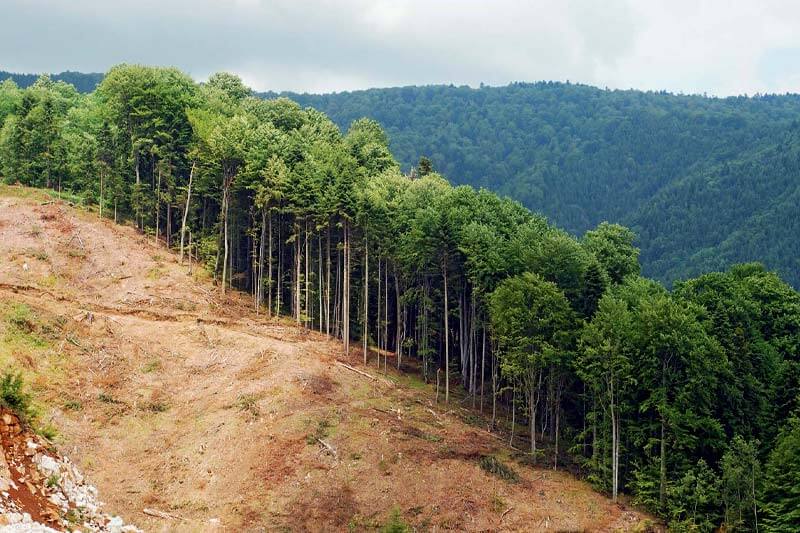
| Average hectares lost/year | Net forest conversion Source: FAO 2020 | Tree cover loss Source: Hansen / WRI 2020 | Tropical primary forest loss Source: Hansen / WRI 2020 |
|---|---|---|---|
| Russia | 139,406 | 4,164,738 | |
| Brazil | 1,885,640 | 2,993,616 | 1,314,788 |
| Canada | 454,175 | 2,395,826 | |
| United States | 145,700 | 2,033,577 | |
| Indonesia | 800,790 | 1,598,176 | 585,230 |
| D.R. Congo | 1,101,376 | 1,050,115 | 366,635 |
| Tanzania | 420,501 | 158,463 | |
| Bolivia | 226,472 | 374,628 | 183,894 |
| Paraguay | 357,281 | 360,644 | 53,271 |
| Angola | 555,062 | 199,453 | 9,109 |
| Mozambique | 224,801 | 204,690 | |
| Sweden | 152,400 | 262,467 | |
| Myanmar | 301,896 | 269,628 | 38,307 |
| Cambodia | 297,030 | 166,746 | 90,319 |
| Peru | 183,798 | 210,153 | 137,352 |
| Colombia | 171,198 | 243,306 | 96,090 |
| Argentina | 189,000 | 297,398 | 21,088 |
| Zambia | 188,197 | 122,413 | |
| Mexico | 128,510 | 228,326 | 39,587 |
| Venezuela | 164,303 | 113,585 | 33,249 |
Where is deforestation happening the most?
Deforestation is a problem on every continent. To get a better picture of how bad deforestation has been, let’s get down to the numbers.
On average, the world lost around 8.8 million hectares of natural forest cover in 2021.
Below is how much each continent lost:
| Continent | Hectares lost |
|---|---|
| Africa | 3.2 million |
| South America | 3.6 million |
| North America | 780,000 |
| Asia | 1.1 million |
| Oceania | 200,000 |
| Europe | Data yet to be released |
How many trees will there be in 2050?
It depends. While the world has been on the right track since 1920 in terms of forest growth, the number of trees in 2050 will depend on what we do moving forward.
According to a study conducted by the Center for Global Development, we stand to lose at least one million square miles of forested land by 2050 to deforestation.
This will bring down the total number of trees to around 2 trillion trees.
Additionally, many small and middle-income economy countries are projected to have less than 1% forest cover due to the population increase and subsequently, the increased demand for agriculture and more land.
Nevertheless, if the governments continue to implement the right policies governing forest logging, we have no reason to worry.
The number of trees is set to increase by 2050.
Causes of deforestation
There are numerous causes of deforestation. However, they can all be classified as either direct or indirect causes. The direct causes can be divided into:
- Human activities such as agriculture, lumbering/timber extraction, mining, and dam construction among other infrastructure developments
- Natural activities such as hurricanes, floods, fires, pests, and diseases
Here’s a breakdown of how these factors contribute to deforestation.
#1: Agricultural activities
As the world’s population continues to increase, so does the demand for food, shelter, and grazing land among other necessities. By 2023, the world’s total population stood at 8 billion people.
This indicates a more than three-fold population growth when compared to the 2 billion estimated population a century ago.
As such, people are continuing to expand into forested lands converting them into cultivation and livestock grazing land to meet the increasing demand.
It’s estimated that these activities alone contribute to around 85% of the deforestation in the world.
Beef farming has particularly been singled out as a massive deforestation contributor since the farmers clear massive tracts of forest land to grow soy and palm oil that’s later fed to their animals like cows, pigs, and poultry.
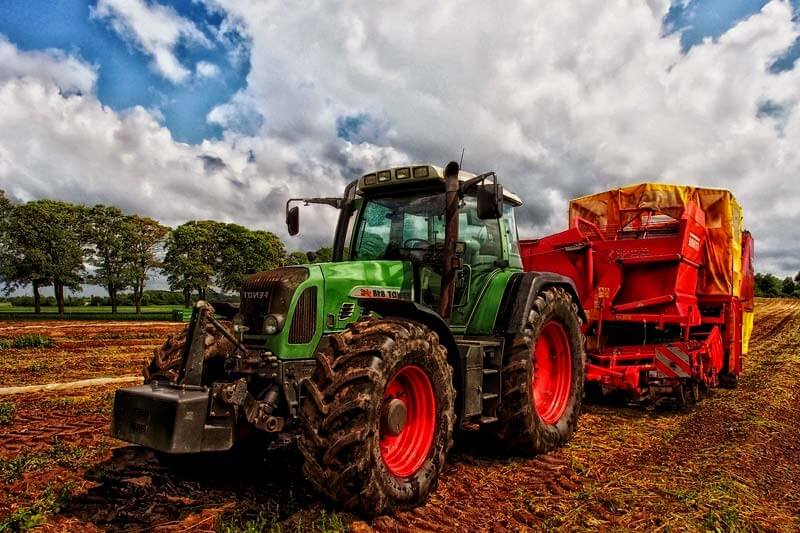
#2: Timber extraction and illegal logging
Over the past two centuries, nothing has been in more demand than timber and its products. Timber is very valuable in the construction industry, furniture industry, and more importantly, the paper business.
With one tree estimated to produce around 8,333 sheets of paper, and the average textbook containing around 700 pages, you can imagine how many trees need to be cut to meet the textbook demands of schools worldwide.
Keep in mind, that the US alone requires more than 626,000 tonnes of paper every year to produce books.
Illegal logging has also been a key player in deforestation. It accounts for around 25% of forest degradation since millions of people in developing countries still consider charcoal and firewood their only source of fuel
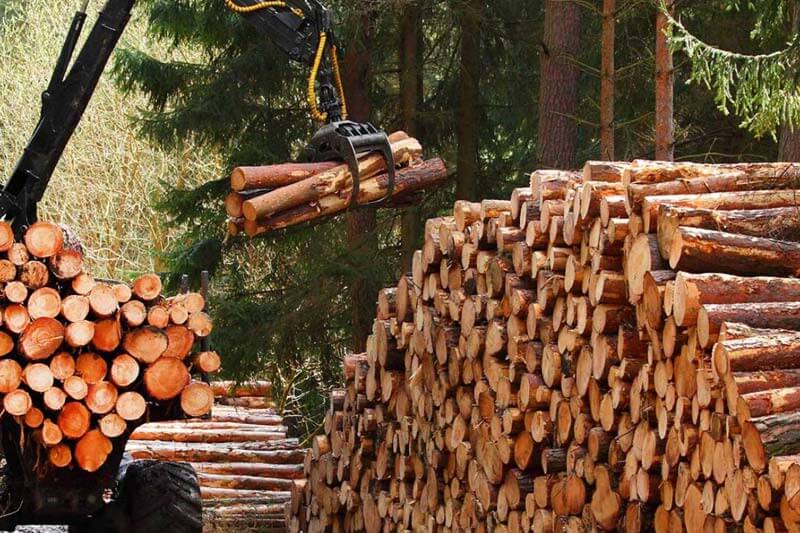
#3: Mining and drilling activities
As the demand for minerals keeps increasing, players in these industries have found it necessary to clear forested lands for their activity. On average, both mining and drilling contribute nearly 7% of all the deforestation worldwide.
The large-scale nature of these activities, especially in tropical forests, means that trees have to be cleared to make room for infrastructural developments.
The pollution resulting from mining and drilling activities has also led to the death of many tree species and wildlife. A case in point has been the numerous mining disasters happening in the Amazon Forest in Brazil.
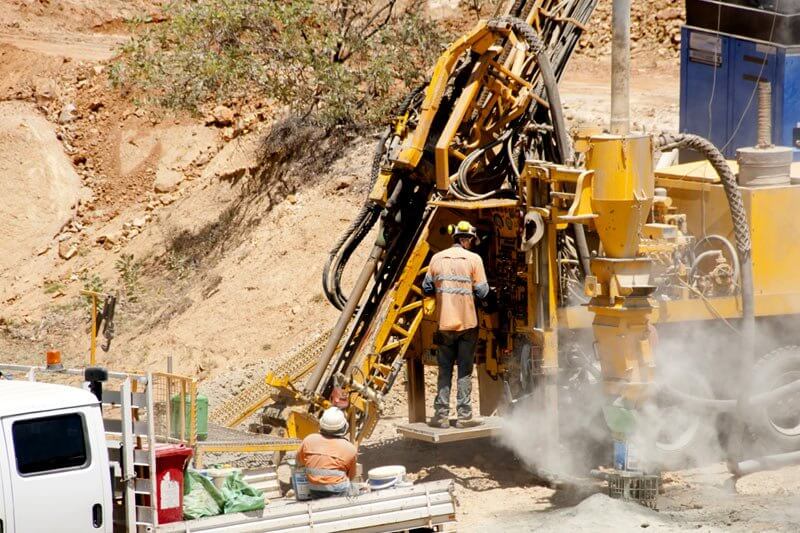
#4: Expansion of infrastructure
Cutting down trees legally or illegally in forested land means that you’ll also need to construct the roads to transport them. This, therefore, increases the size of forested land that has to be cleared.
The creation of dams from rivers cutting across forests also means that more trees will need to be sacrificed.
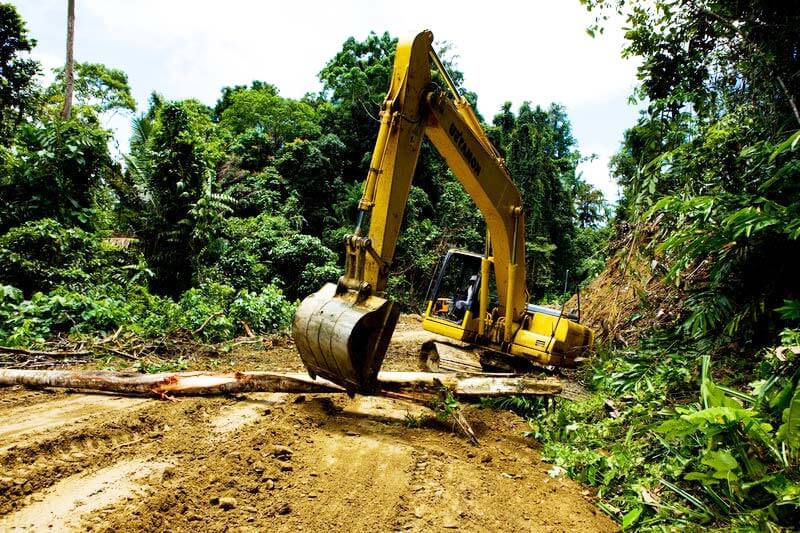
#5: Wildfires
It’s actually no surprise that wildfires have a role to play in deforestation. Barely a year ago, Australia battled a serious wildfire that was dubbed the ‘worst wildlife disaster in modern history.’
In the US, nearly 2.2 million hectares of forest land were burnt down in California in 2020, with another 800,000 hectares burning down in the northwestern parts.
These fires are mainly attributed to climate change but in some cases, human carelessness has been to blame.
In total, the government estimates that wildfires contribute to almost one-quarter of the deforestation faced in the country.
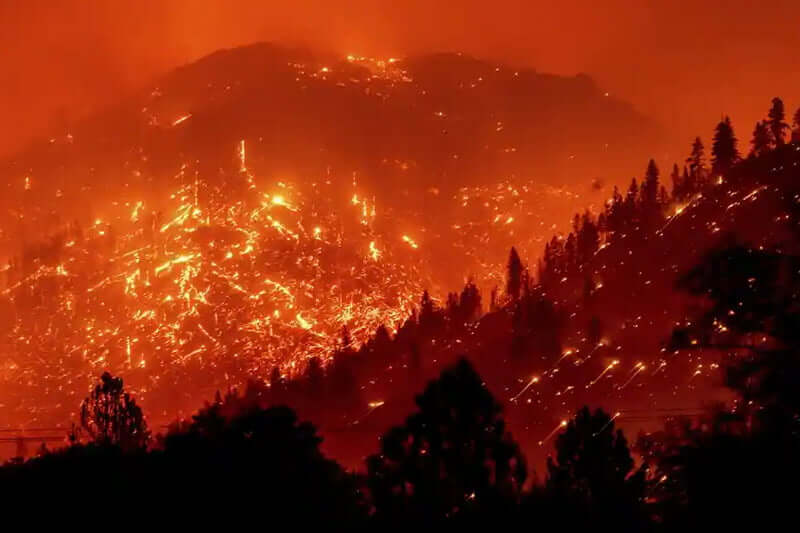
Deforestation in the Americas
United States
Between 2001 – 2020, the US had lost more than 42.2Mha of forest cover showing a 16% decline in tree cover. In 2021 alone, the country lost approximately 2.06Mha of natural forest.
Most of these losses were driven by urbanization and the increase in wildfires caused by global warming and human activities.
Commodity-driven deforestation and the shift in agriculture were also big contributors to this massive forest loss.
Here’s the breakdown of the impact of each of these drivers:
| Driver | Tree cover loss |
|---|---|
| Urbanization | 138kha |
| Wildfires | 830kha |
| Commodity-driven deforestation | 13.7kha |
| Shift in agriculture | 3.17kha |
In terms of location, 8 regions in the country are responsible for around 53% of the total tree losses in the country. These regions include:
- Alaska
- Georgia
- Alabama
- Mississippi
- California
- Oregon
- Florida
- Texas
Canada
Between 2001 and 2020, Canada is estimated to have lost around 44.1Mha of forest cover, accounting for an 11% decline. By the end of 2021, the country had lost a further 1.95Mha of tree cover.
Wildfires were the biggest drivers for these losses in Canada, resulting in a loss of 932Kha of forest cover. However, other drivers such as urbanization and commodity-driven deforestation still played a big part in the loss.
This table shows you their impact:
| Driver | Tree cover loss |
|---|---|
| Urbanization | 6.6kha |
| Wildfires | 932kha |
| Commodity-driven deforestation | 5.63kha |
| Shift in agriculture | 319ha |
It’s important to note that in Canada, the tree cover losses in three regions account for more than 50% of the total deforestation in the country. These affected regions include:
- British Columbia
- Quebec
- Saskatchewan
Deforestation in the Amazon
In South America, deforestation in the great Amazon rainforest in Brazil is probably the most well-known. Governments not just in the region but across the world have expressed their concerns about the vast illegal logging happening in the forest.
As of July 2021, the Brazil National Institute of Space Research estimated that around 8,224 square miles of the tropical primary forest had been lost.
This indicated a 33% increase in deforestation rates within the first 10 months of the year, the highest level seen in about 15 years!
The biggest drivers of deforestation in the Amazon forest include:
- Uncontrolled agricultural expansion
- Unmitigated & illegal gold mining
- Illegal timber logging
- Wildfires
Other South American countries with high deforestation rates include:
| Country | Hectares lost |
|---|---|
| Bolivia | 0.227 million |
| Paraguay | 0.358 million |
| Peru | 0.184 million |
| Colombia | 0.177 million |
| Argentina | 0.190 million |
| Venezuela | 0.165 million |
Deforestation in the Africa
Besides the Amazon, the tropical rainforests in Africa have also caught the world’s attention when it comes to deforestation.
In fact, according to the United Nations Environment Programme, Africa is going through deforestation at twice the rate of the world. Over the past year alone, the continent lost nearly 3.2 million hectares of forested land!
The most affected forest is the tropical rainforest in DR Congo which is estimated to have lost around 0.481 million hectares of primary forest cover in 2021.
The biggest driver for this loss was the shifting agricultural practices among the locals as they sought to create more land for cultivation.
The table below shows the impact of other deforestation drivers in DR Congo’s tree cover losses.
| Driver | Tree cover loss |
|---|---|
| Urbanization | 577ha |
| Wildfires | 203ha |
| Commodity-driven deforestation | 5.50kha |
| Shift in agriculture | 1.30Mha |
Besides DR Congo and most of the West African rainforests, the majority of Sub-Saharan African countries still struggle with the same deforestation issues.
For most of these countries, deforestation is propelled by the lack of proper policies regulating commercial logging, charcoal production, and the expansion of agricultural land.
Below are the countries leading in deforestation rates across the continent:
| Country | Primary forest loss |
|---|---|
| Cameroon | 201Kha |
| Nigeria | 97.8kHa |
| Central African Republic | 55.1 Kha |
| DR Congo | 1.31Mha |
| Ghana | 136Kha |
| Zambia | 163Kha |
| Tanzania | 186 Kha |
| Côte d Ivoire | 247Kha |
Deforestation in the Asia
Across Asia, majority of the deforestation happens in South Asia which is home to around 15% of all the world’s tropical rainforests.
By 2020, Southeast Asia had lost around 235,500 square miles of forest cover, of which 31% of the affected areas were in the mountainous regions.
Indonesia, in particular, has been a massive hotbed for deforestation. Each year, the country loses more than 1.2 million acres of boreal forest, giving it the highest deforestation rate of any country.
In 2021, the country lost around 950 Kha of tree cover with the main driver for this loss being commodity-driven deforestation.
Other factors that influenced this loss included:
| Driver | Tree cover loss |
|---|---|
| Urbanization | 1.4Kha |
| Wildfires | 25.2Kha |
| Commodity-driven deforestation | 800Kha |
| Shift in agriculture | 38.3Mha |
Besides Indonesia, other South Asian countries grappling with deforestation include:
| Country | Primary forest loss |
|---|---|
| Vietnam | 632Kha |
| Myanmar | 300kHa |
| Cambodia | 308 Kha |
| Thailand | 140.2Kha |
| Malaysia | 128Kha |
| Philippines | 70.8Kha |
| Russia | 5.44Mha |
How many trees are left in the world in 2022?
There are approximately 3.04 trillion trees in the world in 2022. This figure shows that there are actually more trees now than there were 100 years ago. The increase is attributed to the massive tree-planting initiatives employed by many governments.
Nonetheless, deforestation is still on the rise and so, we’re not yet out of the woods. Without the right policies in place, we can still as easily lose that massive stride we’ve had over the past century.
Effects of deforestation
The worst thing about deforestation is that its impact is felt by everyone, from humans to animals, to the soil and the entire environment.
Here are a few of the most severe impacts experienced today:
Effects on humans and animals
One of the biggest effects of deforestation on humans has been climate change, an enemy countries meet nearly every year to try and address.
Climate change has caused an unexpected shift in weather patterns which in turn adversely affects food and agricultural production.
Farmers worldwide, have over the past few decades, complained of either too much rainfall or little to no rainfall as an impact of climate change.
Heatwaves have also become a common impact in parts of the US, India, and the Middle East leading to the loss of lives for both humans and animals.
Other most notable effects of deforestation on humans include:
- Increase in natural disasters e.g., flooding, famine, etc., leading to food insecurity, hunger, displacement, and sometimes death.
- Increase in human-wildlife conflict – With the forest cover decreasing, wild animals have begun invading into more human-populated areas. These problems are already being experienced in parts of Asia and Africa where illegal logging is rampant.
- Increase of tropical diseases – As the loggers get deeper into rainforests, they get in closer contact with different microorganisms some of which possess disease-carrying pathogens. As a result, new diseases are more likely to break out.
Note: Other diseases like Malaria and Bilharzia (Schistosomiasis) can be linked directly back to land alterations as a result of human activities.
- Destruction of renewable resources – Forests provide a massive opportunity for countries to increase their revenue through selling timber and ecotourism. But as a result of illegal logging, countries with tropical forests i.e., those in Asia and West Africa miss out on billions of dollars in revenues and also lose a lot of their renewable forest cover.
Effects on the environment
The environment and soil also take a hit because of deforestation. Here are a few of the impacts of deforestation on the environment:
- Increased soil erosion – With only a few trees left to provide shade and keep the soil compact through the roots, soil erosion has become more rampant. Wind easily sweeps the soil, while the rain washes away the topsoil quickly. This has led to farmers struggling with lower crop yields due to infertile soils.
- Rise in the sea level – As an impact of global warming, the ocean water is constantly expanding due to the melting of the ice in the north and south poles. If this continues, natural disasters like hurricanes, storm surges, and tides will be magnified causing severe damages deeper inland.
- Extinction of some species – Cutting down forests also means that all the species that depend on rainforests for survival are at risk of going extinct. An instance of this happened in the West African equatorial where several species of animals found there have vanished leaving no trace.
- Changes in ecosystems – The shift in climate patterns is also taking its toll on the animal and plant distribution on the earth. For instance, scientists project a gradual decline in coral reefs over the next 50 years due to the increased water temperature.
How can we put an end to deforestation?
To successfully put an end to deforestation, everyone has to play their part.
Luckily, several governments and organizations have already implemented policies and schemes to manage forested areas. Some of the most effective ones include banning illegal logging of trees and setting up protected forest zones.
But to play your part in stopping global warming, here are some things you can do:
- Engage in tree-planting drives whenever you can
- Opt to go paperless whenever possible both at your home and office
- Raise awareness of tree preservation among your circle and community
- Use recycled products and recycle your paper and cardboard items to reduce the demand for timber
- Prioritize purchases from sustainable wood products with the Forest Stewardship Council (FSC) mark.
- Reduce your consumption of meat and don’t use palm oil or its products
- William Brittlebank, (2015) Three trillion trees on Earth with 15bn cut down per year <https://www.climateaction.org/news/three_trillion_trees_on_earth_with_15bn_cut_down_per_year> Accessed: 15-02-2024
- Food and Agriculture Organization of the United Nations, (2020) The State of the World’s Forests 2020. <https://www.fao.org/interactive/state-of-forests/2020/en/> Accessed: 15-02-2024




